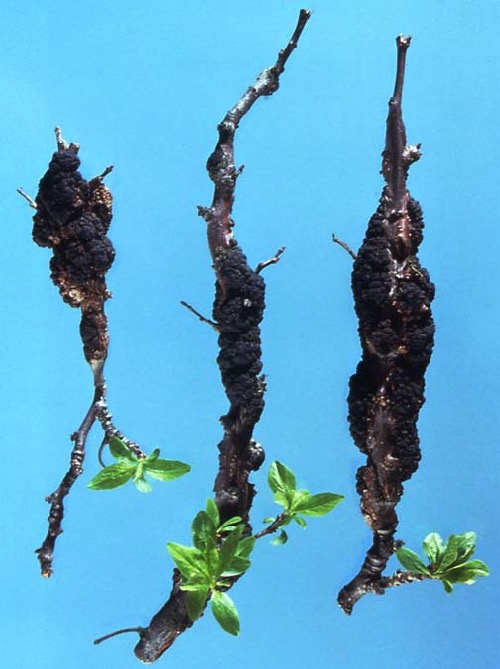
If you have plum or cherry trees, beware of this unsightly growth!
Be on the lookout for hideous growths that could be infesting your precious plum or cherry tree and can also infect apricots and peaches. Now is the time to scout for Black Knot which is caused by the fungus Apiosporina morbosa. Say that backwards three times and ye will turn into a newt! The obvious hard black elongated swellings (knots) vary in length from 1 to 6 inches or more and can form anywhere along the branches. Knots can be scattered throughout the tree with numbers increasing each year if left untreated.
The spores of this fungus are spread to other branches and susceptible trees by wind and rain during warm spring weather. The disease can limit the production of fruit trees or ruin the esthetic value of ornamentals. Twig dieback is common and when the infestation becomes severe it can be fatal. It takes several years for symptoms of this disease to become obvious.
The best approach to control Black Knot is to prune and destroy all knotted branches during the dormant season before April 1st in the Northeast. Prune at least 6” below the knot into the healthy wood to remove all fungal material. Remove diseased branches from your property or you may burn them. Also, it’s best to remove any infected wild cherry or plum trees surrounding your property as they will infect the plum and cherry trees in your landscape. After pruning out the diseased material, it is often advisable to follow-up with several fungicide treatments.
If the infestation is severe, it is usually best to remove the tree. Since this is a very serious disease, it’s best to consult with a certified arborist to confirm the diagnosis and to prune the knots from the tree. In most cases, this is not a job for the homeowner. Removal must be thorough and needs to be done carefully to prevent contamination to healthy branches.
Contact Fine Gardeners for a consultation or a local certified arborist in your area.